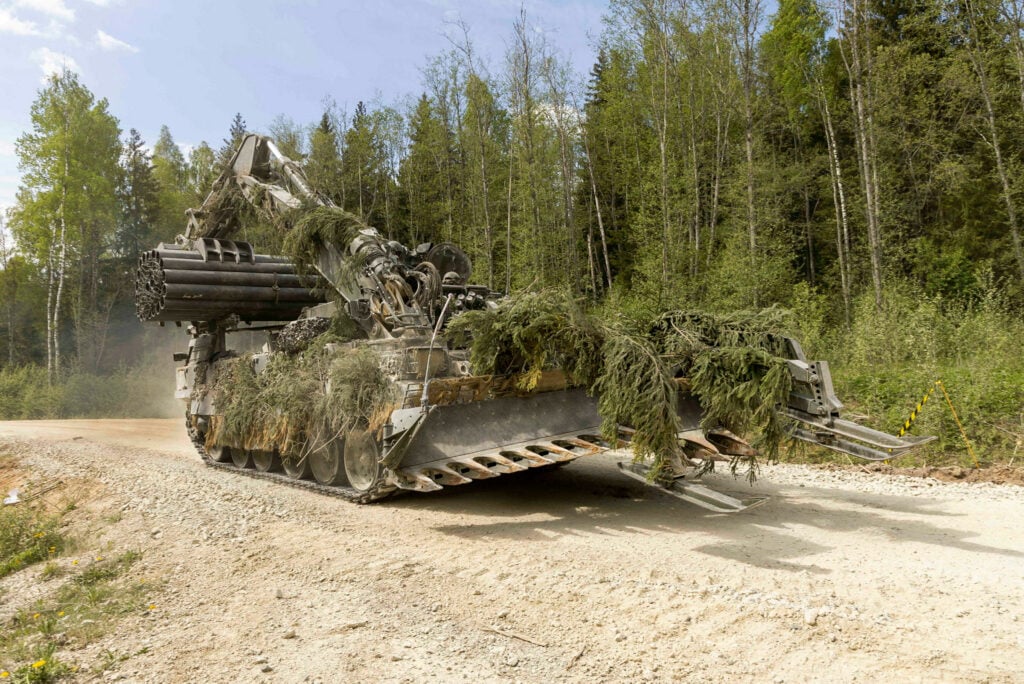
The Trojan Armored Vehicle is engineered to support military engineering units in a variety of combat scenarios. It is particularly effective in breaching minefields, clearing obstacles, and ensuring safe passage for following troops and vehicles. This vehicle, developed by BAE Systems, is built on the chassis of the Challenger 2 main battle tank, which provides a robust and proven platform for complex engineering tasks in hostile environments.
Trojan Design and Features
Chassis and Armor:
The Trojan is built on the durable and heavily armored chassis of the Challenger 2, offering the same level of protection against small arms fire, shell splinters, and anti-tank mines. This design choice ensures that the vehicle can operate effectively in the same high-threat environments as main battle tanks.
Mobility:
Despite its heavy armor, the Trojan retains good mobility thanks to its powerful engine and suspension system, which are also derived from the Challenger 2. It can traverse difficult terrains and maintain pace with other armored units during operations.
Obstacle-Clearing Capabilities:
The Trojan is equipped with a range of obstacle-clearing tools, including a front-mounted dozer blade, mine plow, and a Python rocket-propelled line charge system for clearing minefields. The dozer blade can be used for constructing and clearing obstacles, while the mine plow can detonate or push mines aside, creating a safe path for following units.
Crew Protection:
The vehicle is designed to accommodate a crew of three: the driver, commander, and an engineer. The interior is fitted with blast-resistant seating and additional armor to protect the crew from improvised explosive devices (IEDs) and mine blasts.
Trojan Armored Vehicle Performance and Capabilities
Engine and Powertrain:
The Trojan is powered by a Perkins CV12-6A V12 diesel engine, producing 1,200 horsepower. This engine, combined with a six-speed gearbox, provides the vehicle with sufficient power to maneuver over rough terrain and through obstacles while towing additional engineering equipment if necessary.
Operational Range:
The Trojan has an operational range of approximately 450 kilometers on a full tank, making it suitable for extended operations without the need for frequent refueling.
Speed:
The vehicle can reach speeds of up to 59 km/h on roads and around 40 km/h off-road, allowing it to keep up with other armored units in a combat zone.
Armament and Self-Defense
Primary Armament:
While not primarily designed for combat, the Trojan can be fitted with a 7.62mm general-purpose machine gun for self-defense against infantry threats. This weapon is mounted on the commander’s hatch and can be operated from within the vehicle.
Countermeasures:
The vehicle is equipped with smoke grenade launchers that provide a smoke screen to obscure its movements and disrupt enemy targeting systems. It also has electronic countermeasure systems to jam remote detonated IEDs and mines.
Support and Logistics
Maintenance:
The use of the Challenger 2 chassis means that the Trojan shares many components with the main battle tank, simplifying maintenance and logistics. This compatibility reduces the logistical burden and allows for easier access to spare parts and repair services in the field.
Deployment:
The Trojan can be deployed alongside other engineering vehicles such as the Titan bridge-layer, forming an integral part of a combat engineering squadron capable of overcoming a wide range of battlefield obstacles.




















